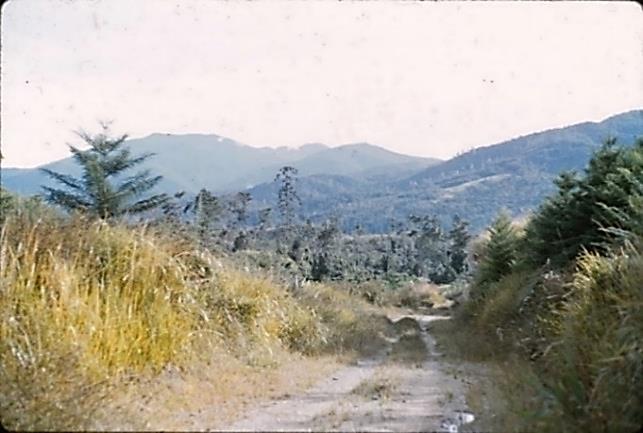
2 minute read
Harvesting and Marketing
from PNGAF MAGAZINE ISSUE # 9B-5B4H3 of 24th June 2022. Eminent TPNG Forester Des Harries.
by rbmccarthy
Forestry operations, through the plantation program, was largely restorative. It is true that the preliminary harvesting of sawlogs and the pre-plantation clear falling and burn off caused short term erosion and disruption of the pristine forest. But under forestry control these scars were healed in a few years. In particular, the network of retained forest cover between plantation compartments, along creek lines and on slopes deemed too steep for plantations, ensured wildlife refuge and the preservation of all native forest values. The plantations themselves were initially all native conifers.
The area of Kauli Creek cleared at the time of establishing Anderson’s Plot (approximately 1940) was probably more extensive than the area actually planted. This may explain the severe grass infestation in the neighboring 1956-57 plantation known as Compartment 1, Anderson’s Logging Area. (Note 5). Grass
Advertisement
infested Hoop Plantation near Anderson’s Plot, c.1961. Photo Credit Des Harries.
Because of its age, and despite its small size, Anderson’s Plot remained of interest during the post-war years. Growth plots were installed for regular measurement.
The most damaging feature of the forest plantation program was undoubtedly the construction and maintenance of access roads. In this climate and on the slopes of the valley, land slips were a continuing problem.
During the Battle of Wau, which took place in 1943, this area was occupied by Japanese forces. Significant numbers of unused mortar bombs were found during planting and tending of the post-war plantations.
Harvesting and Marketing
In 1960 New Guinea Goldfields Pty. Ltd. held a Permit to take logs from the Wau forestry area. This amounted to two million super feet per month. These logs were for conversion at their local sawmill. The logging crew operated with one truck, one bulldozer and the small crew was supervised by Mr. ‘Taffy’ Evans, who knew the area well.
Forestry required the logging operation to be coordinated with its reforestation program, and for this purpose regular liaison was essential. Pine stands were of scattered distribution in small to moderate stands which made harvesting to the Permit quota tricky. Apart from Pine (both Hoop and Klinkii) considerable volumes of prime hardwoods were also available, but less sought after by NGG.
Monthly harvesting returns were submitted by NGG to the Regional Forest Office for the area and were not sighted by the local Forest Officer responsible for overall supervision. The harvesting system required that the logging crew marked logs taken from the forest. These should have been measured for royalty purposes at the log ramp. Obviously, this messy system had the potential for many failings including the theft of timber. With the staff








